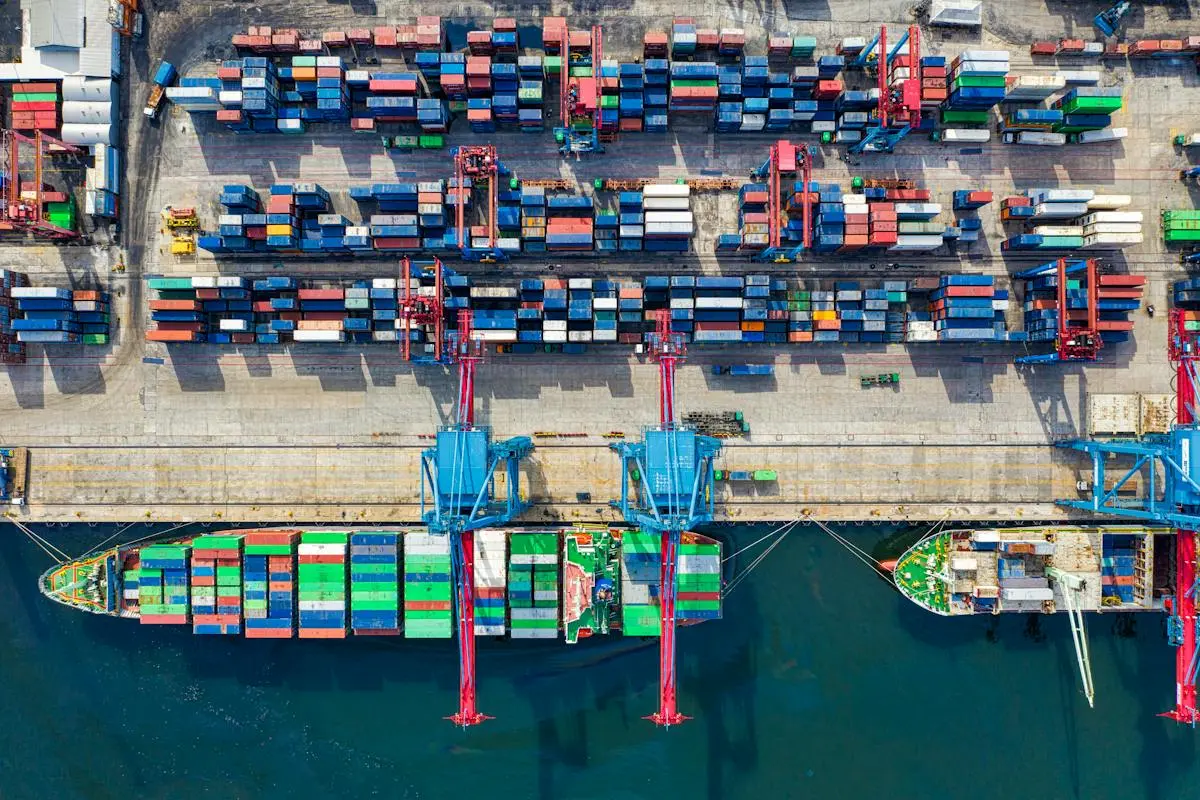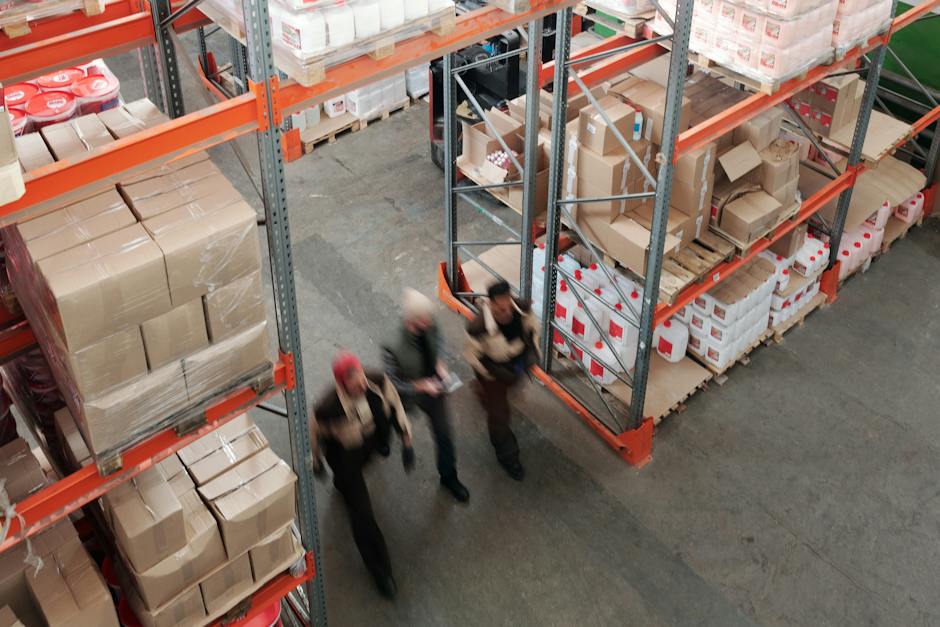Understanding supply chain emissions
Supply chain emissions refer to the greenhouse gases and other pollutants released during the production, transportation, and distribution of goods. To understand supply chain emissions, it's essential to consider the various stages of the supply chain, including manufacturing, transportation, and packaging. By identifying and quantifying these emissions, companies can develop strategies to optimize their supply chains and reduce their environmental impact. This can involve implementing cleaner technologies, optimizing transportation routes, and collaborating with suppliers to minimize emissions. Understanding and addressing supply chain emissions is crucial for achieving sustainability goals and meeting environmental regulations.

Impact of supply chain emissions on the environment
Supply chain emissions refer to the greenhouse gases and other pollutants generated during the production, transportation, and distribution of goods. These emissions significantly contribute to environmental pollution and climate change. Reducing supply chain emissions is crucial for minimizing the impact on the environment. Companies can optimize their supply chains by implementing eco-friendly transportation methods, improving energy efficiency in production facilities, and sourcing materials from sustainable suppliers. By doing so, they can help reduce the environmental impact of their operations.
Identifying sources of supply chain emissions
To identify sources of supply chain emissions, you need to look at the different stages of your supply chain. This includes the production of raw materials, manufacturing, transportation, and distribution. Some key areas to focus on when identifying emissions sources include:
- Raw Materials Production: Consider the energy and emissions associated with extracting raw materials and manufacturing components.
- Manufacturing Processes: Evaluate the energy consumption and emissions generated during the production of goods.
- Transportation: Take into account the emissions produced during the transportation of raw materials, components, and finished products.
- Distribution: Look at the emissions related to warehousing and distribution activities.
By identifying these sources of emissions, you can better understand where to focus your efforts in optimizing your supply chain for reduced environmental impact.
Ways to measure and track supply chain emissions
To measure and track supply chain emissions, you can use different methodologies such as conducting a carbon footprint analysis, tracking emissions along the entire supply chain, and utilizing software solutions that provide real-time data on emissions. Additionally, setting clear emission reduction targets and regularly monitoring progress can help optimize and minimize the environmental impact of your supply chain.
Strategies to reduce supply chain emissions
Reducing supply chain emissions can help your business save money and reduce its environmental impact. Some strategies to achieve this include:
- Optimizing transportation: Use more efficient modes of transportation, such as rail or sea freight, and consider consolidating shipments to reduce the number of vehicles on the road.
- Sourcing locally: Work with local suppliers to reduce the distance goods need to travel, cutting down on transportation emissions.
- Improving energy efficiency: Encourage suppliers to invest in energy-efficient machinery and processes to reduce emissions during manufacturing.
- Implementing green technology: Explore the use of renewable energy sources and implement technologies like electric vehicles to lower emissions in your supply chain.
Importance of optimizing supply chain emissions
Optimizing supply chain emissions is crucial for reducing environmental impact and cutting down on costs. By identifying areas of improvement and implementing eco-friendly practices, companies can improve their sustainability and appeal to environmentally conscious consumers. It's important to consider the entire supply chain process, from raw material extraction to manufacturing, transportation, and distribution. Reducing emissions at each stage can lead to a significant overall impact. Implementing efficient transportation, using renewable energy sources, and reducing waste are effective ways to optimize supply chain emissions.
Collaborating with suppliers to reduce emissions
To reduce emissions in your supply chain, collaborating with your suppliers is crucial. By working together, you can identify areas for improvement and implement eco-friendly practices. This collaboration can lead to more efficient transportation, reduced packaging waste, and optimization of energy usage. Establish clear communication with your suppliers to set emission reduction goals and share best practices. Regularly audit your supply chain to ensure compliance with emission standards and to identify areas for improvement. Encourage innovation by seeking out new, sustainable solutions, and support your suppliers in their efforts to reduce emissions. By working together, you can make a significant impact on the environmental footprint of your supply chain.
Using technology to monitor and optimize emissions
Using technology to monitor and optimize emissions can help companies track and reduce their carbon footprint. This includes using sensors, data analytics, and real-time monitoring to identify areas for improvement in the supply chain. By implementing these technological solutions, businesses can optimize their operations to reduce emissions and improve their environmental impact. This proactive approach not only benefits the environment but also contributes to a more efficient and sustainable supply chain.
Best practices for sustainable supply chain management
Sustainable supply chain management involves incorporating environmental and social responsibility throughout the entire supply chain process. To optimize supply chain emissions, consider implementing the following best practices:
- Supplier Evaluation: Assess the sustainability practices of your suppliers to ensure they align with your environmental goals.
- Transportation Efficiency: Explore options for reducing transportation emissions, such as optimizing delivery routes and utilizing low-emission transportation methods.
- Energy Conservation: Encourage energy-saving practices and the use of renewable energy sources within your supply chain operations.
- Packaging Optimization: Minimize packaging waste and explore eco-friendly packaging alternatives to reduce environmental impact.
- Collaboration: Work closely with suppliers and partners to jointly develop and implement sustainable initiatives throughout the supply chain process.
By implementing these best practices, businesses can work towards optimizing supply chain emissions and promoting sustainable supply chain management.
Conclusion: Moving towards a greener supply chain
To conclude, optimizing supply chain emissions is crucial for moving towards a greener and more sustainable future. By reducing emissions, companies can minimize their impact on the environment and contribute to a healthier planet. Implementing strategies such as improving transportation efficiency, sourcing materials locally, and using renewable energy are effective ways to achieve a greener supply chain. It is essential for businesses to prioritize sustainability and take proactive steps to minimize their environmental footprint.
